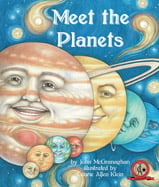Alignment to Standards for FL

| Grade | Number | Standard |
|---|---|---|
| 1 | SC.1.E.5.1 | Observe and discuss that there are more stars in the sky than anyone can easily count and that they are not scattered evenly in the sky. |
| 1 | SC.1.N.1.3 | Keep records as appropriate - such as pictorial and written records - of investigations conducted. |
| 3 | SC.3.E.5.2 | Identify the Sun as a star that emits energy; some of it in the form of light. |
| 3 | SC.3.E.5.3 | Recognize that the Sun appears large and bright because it is the closest star to Earth. |
| 3 | SC.3.N.1.3 | Keep records as appropriate, such as pictorial, written, or simple charts and graphs, of investigations conducted. |
| 4 | SC.4.E.5.2 | Describe the changes in the observable shape of the moon over the course of about a month. |
| 4 | SC.4.E.5.3 | Recognize that Earth revolves around the Sun in a year and rotates on its axis in a 24-hour day. |
| 4 | SC.4.E.5.4 | Relate that the rotation of Earth (day and night) and apparent movements of the Sun, Moon, and stars are connected. |
| 5 | SC.5.E.5.2 | Recognize the major common characteristics of all planets and compare/contrast the properties of inner and outer planets. |
| 5 | SC.5.E.5.3 | Distinguish among the following objects of the Solar System -- Sun, planets, moons, asteroids, comets -- and identify Earths position in it. |
| K | SC.K.E.5.3 | Recognize that the Sun can only be seen in the daytime. |
| K | SC.K.E.5.5 | Observe that things can be big and things can be small as seen from Earth. |
| K | SC.K.E.5.6 | Observe that some objects are far away and some are nearby as seen from Earth. |
| K | SC.K.N.1.1 | Collaborate with a partner to collect information. |